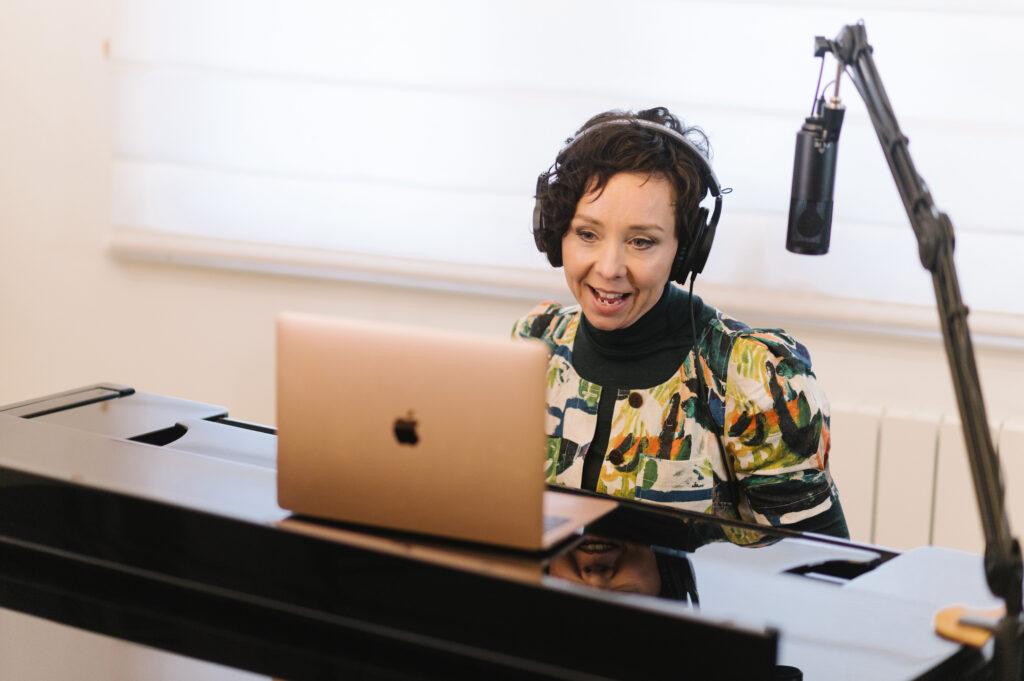A new client wanted to unpack the hot and somewhat contentious subject of “mix” voice and what it is. Whilst I am no expert in physiology or science I have been teaching for 20 years and teaching mix is something I’ve become known for. Before I begin, I know there will be colleagues of mine who will disagree with some of what I say – I’ve come to recognise that its ok to have differing ideas, and ultimately I believe we mostly end up at the same space eventually. But for now, here is my 2 cents!
To understand what “mix” voice is we must start by defining vocal registration – a component of mix. Vocal registration is a series of tones of similar qualities, a particular vibratory pattern of the vocal folds. Common terms are chest voice, head voice, modal voice, falsetto voice, and vocal fry.
“Mix/mixed” voice is NOT a vocal registration, it is not “the mix” it is “a mix” or just “mix”. From what I have come to understand it is a use of unique acoustic settings within the vocal tract coupled with a specific vibratory pattern of the vocal folds (registration). Let’s break these two essential components down: Vocal folds have layers; when we sing in our lower pitches the deepest layer is activated (chest register/M1), as we ascend higher the depth of fold (vibration mass) decreases so that in the highest part we are using just the edges of the folds (head register/M2). The vocal tract is the space and cavities above the vocal folds, from the larynx all the way to the lips. It can be shaped and manipulated by the position of the tongue, lips, soft palate, and larynx. It’s a resonance changer.
This information is important in light of what I said about “mix” voice. If you consider the variety of shapes you can create in the vocal tract, coupled with the degree of vocal fold mass that is vibrating it becomes apparent that “mix” voice is extremely comprehensive. It is not defined to one place in the voice and can take place throughout the entire vocal range (excluding extremes).
Singers use some type of “mix” quality most of the time, they are just unaware, because either nobody has pointed it out, or the “mix” is subtle. A great example of someone using a mix in the higher register is Aretha Franklin – when she sings high notes that almost sound like chest voice, she is actually making acoustic adjustments that enable her to use less vibrating mass at the vocal folds coupled with vocal tract shaping and consequent resonance boosts – I doubt she ever really thought of it this way though! It’s very clever and although not everyone can sound like Aretha (she has her own unique vocal build), strategies can be used in every singer to boost certain frequencies and put less stress on the vocal folds.
I work exclusively with contemporary singers – jazz, pop, MT, folk, RnB, rock etc. All of these genres have the recognised ability to treat vocal registers in very different ways. Most spend a majority of their time in chest voice or M1 with varying degrees of usage of head voice (M2), falsetto and fry. The cool part is that for many contemporary genres it’s up to the artist how they want to approach the song, leaving how they utilise the registration up to them. For example – if a country singer wants to sing in a strong gutsy low sound (thick fold, M1) on a specific note, then flip into a light airy falsetto (M2) for effect, they can do so, and its totally accepted. If a rock singer wants to yell hard (thick fold M1 ) higher in their voice and get a gravelly sound or distortion then that is also accepted (and often celebrated!) Both are using the same register in a very different way due to their vocal preference and style and both are valid.
No matter what style of contemporary singing you do, sooner or later you will come up against your vocal break (or bridge as I prefer). This is where “mix” really shows some super power! If you don’t want to have a sudden shift in voice quality then you can choose to utilise a mix which will eliminate any drastic changes in voice quality. This strategy might incorporate vowel shaping, lip shaping, larynx positioning, volume adjustment, increased or decreased airflow. I think this is largely where the misconception of “mix” being regarded as a register originates, and the term has also been called “middle voice” – referring to it being in the middle of one registration and another – namely chest (M1) and head (M2). I can see why this may be the case but thinking of it as a middle suggests that it belongs in one place, and for me that does not ring true. That said, I’m no voice scientist and I’m open to correction.
My own perception on mix has evolved over the past 20 years. I see it as a most useful tool in voice preservation for contemporary singers, as it has the capacity to give a singer greater vocal gains with less impact on the folds. I also see it as a means for vocalists to make more nuanced choices with their artistry. My greatest problem with the term are the parameters that have been put around whether an individuals “mix” is right or wrong/ good or bad, which is largely subjective. It’s also common to hear from singers who think that “mix” voice is perceived as light or not powerful – giving it a limited use from a commercial or artistic standpoint. Mix CAN sound light, it can also sound big and heavy (a la Aretha!).
So what is “mix”? “Mix” is not a mystical voice register. It is not even a voice register! It is a singers metaphorical mixing desk where they can choose dials to be turned up or down, some switches on and some off, according to the parameters of their own unique voice, its development and the music they want to sing.










